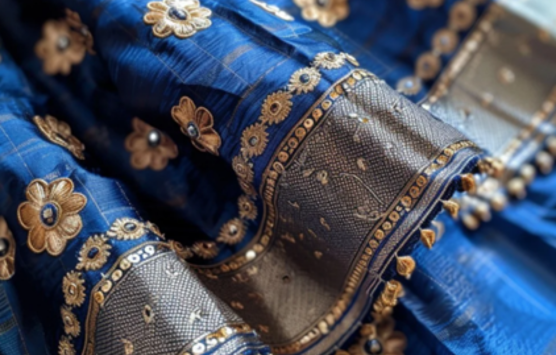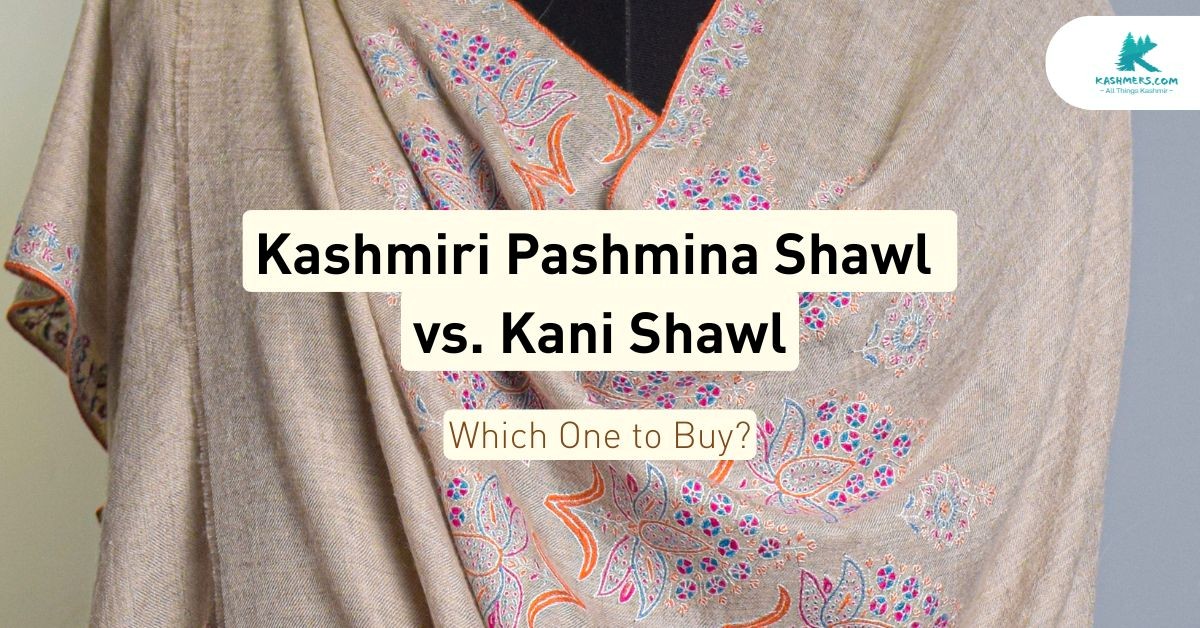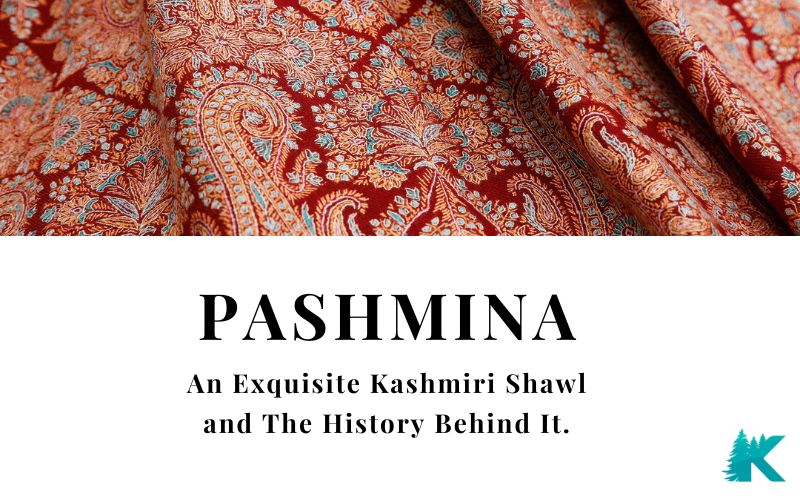Zari Work in Kashmiri Fashion: The Story Behind the Craft

Zari work is an ageless fabric ornamentation method that has deep cultural and historical roots in Kashmir. This technique involves intricate metallic threadwork on fine silk fabrics which makes every attire a masterpiece and a class of its own.
Fabrics with Kashmiri Zari art were a top priority for royalty both in India and Europe back in the day. The popularity of this elaborate embroidery technique is still growing by the day and the credit goes to the local Zari workers of Kashmir who have kept this art alive even after centuries.
This blog celebrates the history and story of this art form. Here you will learn what makes Zari work so unique and special both in terms of its execution and cultural importance so keep on reading till the end.
- The Art of Zari Work
- Kashmiri Zari Work: The Origins, History and Story Behind the Craft
- Zari Work: Materials and Making
- Various Forms of Zari Work
- Zardozi
- Kamdani
- Mina Work
- Gota Work

The Art of Zari Work
The valley of Kashmir is known globally for its breathtaking natural scenes, rich culture and vibrant lifestyle. This region also has a rich handcrafting industry where artisans use ancient tools and methods to create exotic fabrics that you can wear on all occasions.
One popular art form in this region is the Kashida or embroidery which is famous for its graceful use of nature-inspired motifs. The Zari work is the most popular embroidery method the Kashmiri artisans use to weave intricate patterns on fabric using gold or silver threads.
This embroidery technique is used in traditional Pakistani, Indian and Bangladeshi garments like saris, ghararas, lehengas, kurtas etc.
Kashmiri Zari Work: The Origins, History and Story Behind the Craft
The origin of the Zari work can be traced back to the Mughal Era and it is considered to have Persian roots. In fact, the Mughals were the ones to popularize this art. However, there are some accounts that suggest the story of this art starts from way back.
The art is believed to have originated from a village called Zari in ancient Persia. The Persian immigrants brought this art to India during the Rig Vida Era between 1700 and 1100 BC. The term Zari is derived from Zar which is a Persian word for Gold. This is another factor that hints at its Persian origins.
There is a mention of Hiranya or a sacred cloth of gold in the scriptures Rig Vida which is a lot like a present-day garment woven with Zari. There are also some references to this craft in ancient Chinese and Egyptian cultures which suggests it might be older than we think.
There are historical sources from the period of 4th-6th century CE that suggest the existence of rich embroidery on shawls, veils and scarves in India. The famous traveler Marco Polo also mentioned carrying back cushions and other artifacts embroidered with gold and silver back in the 13th century.
The biographer of King Harshavardhana (590-647 CE) called Banabhatta also writes about footwear and clothes embellished with metallic threads. An 8th century Sanskrit text Kuttanimatam by Damodargupta also mentioned this craft which highlights its long history.
The Zari work reached new heights of popularity and excellence during the Muslim rule in the region. The Muslim royals established Karkhanas or workshops which institutionalized this art form.
This art flourished during the Mughal period, especially during the rule of Emperor Akbar and Aurangzeb who were particularly keen on promoting this art in the region.
Zari Work: Materials and Making
The Zari work involves twisting a gold, silver or some other metal-based strip around cotton or silver yarn. The flattened metallic yarns are wound on a base yarn made from silk or cotton.
This is a labor-intensive craft that requires a lot of commitment and great talent. Most Zari works involve the use of two threads i.e., Kora (dull) and Chikna (shiny).
The process starts with creating a design on paper. This design is then transferred to the fabric with a pouncing pad and chalk solution. The patterned fabric is then stretched on a wooden frame. The artisans sit around this frame and use needles and threads to bring the patterns to life.
In brocade weaving, the metallic threads are weaved alongside ordinary threads which creates a raised design perfect for adding accents to garments. Kashmiri artisans can also embroider the metallic threads directly onto the fabric to create floral, paisley and gematric patterns with high details.
Various Forms of Zari Work
Following are some popular forms of Kashmiri Zari work
- Zardozi
This is the most popular Zari work variety which features a heavy and more elaborate embroidery work. The patterns are made using gold threads, beads, gota and seed pearl combinations on silk or velvet fabrics.
The Zardozi work is mostly used for wedding outfits and heavy coats to make a fashion statement.
- Kamdani
This is a very light and intricate needlework that is used to create detailed patterns on caps, scarves etc. In this technique, the ordinary threads are used and the metallic wires are pressed down to create a Satin stitch effect. This creates a glittering fabric that looks unreal.
- Mina Work
This type of Zari mainly uses gold threads to create patterns that resemble enamel work.
- Gota Work
The gota ribbons are woven with a warp of flattened metallic wire and a weft of thread made from cotton or silk. These are used as functional trims on traditional Kashmiri garments.
Conclusion
The Zari work of Kashmir is a testament to the region’s illustrious artistic values, rich culture and history. This intricate craft weaves tales of elegance into every fabric that reflects the region’s natural beauty and traditional heritage.
Zari is truly a timeless art that has persisted through the ages due to its ability to capture the imaginations of both the artisans as well as the wearers. The rich textures and vivid designs that come from the Zari embroidery make it an exquisite fabric ornamentation method that can transform any fabric into something exquisite and out of this world.You can visit us at Kashmers if you are looking for pure and authentic Kashmiri food, home & living, personal care or fashion products to get the best value for your money.


